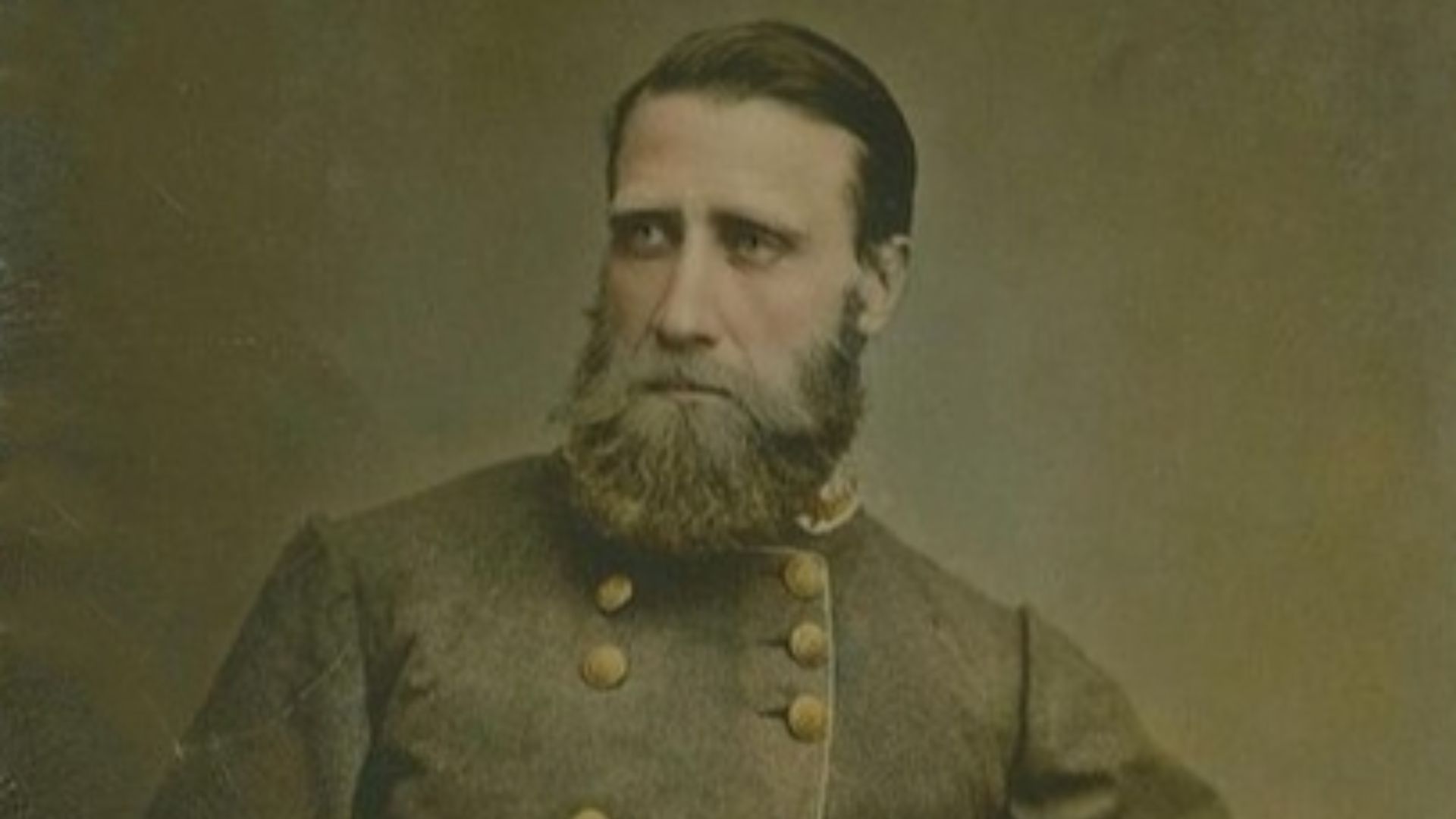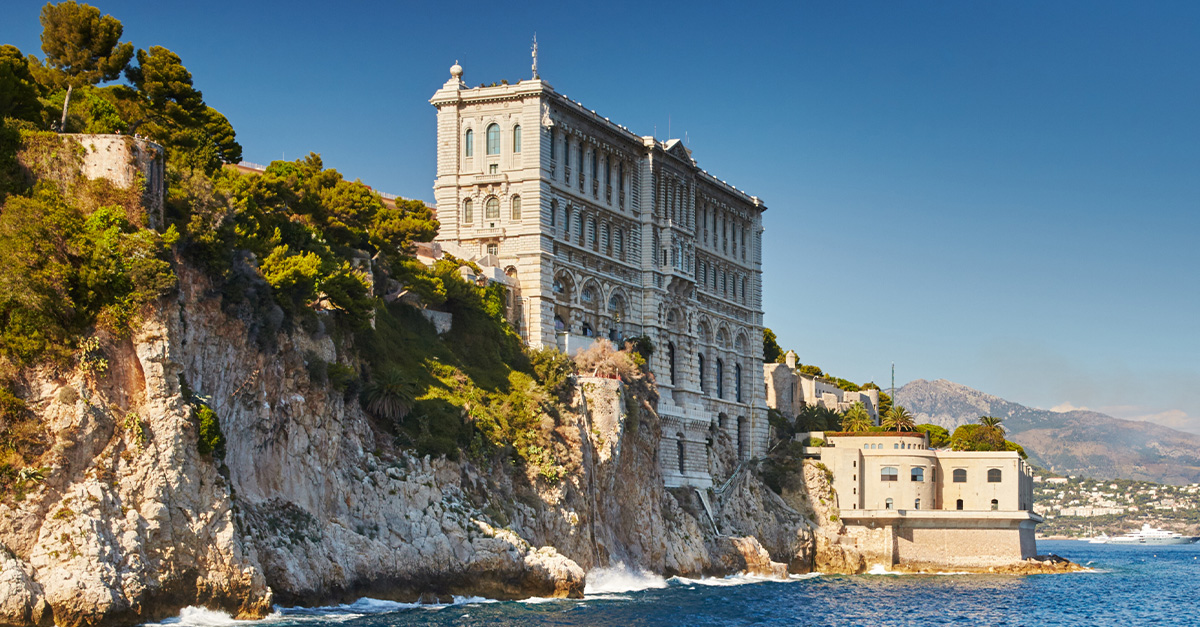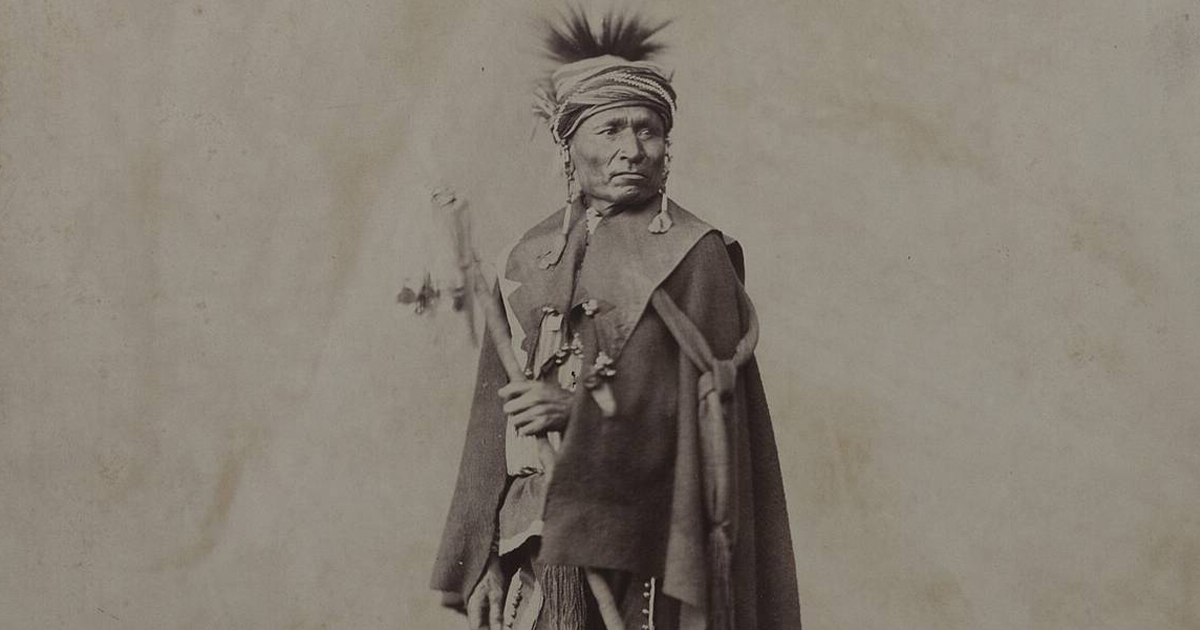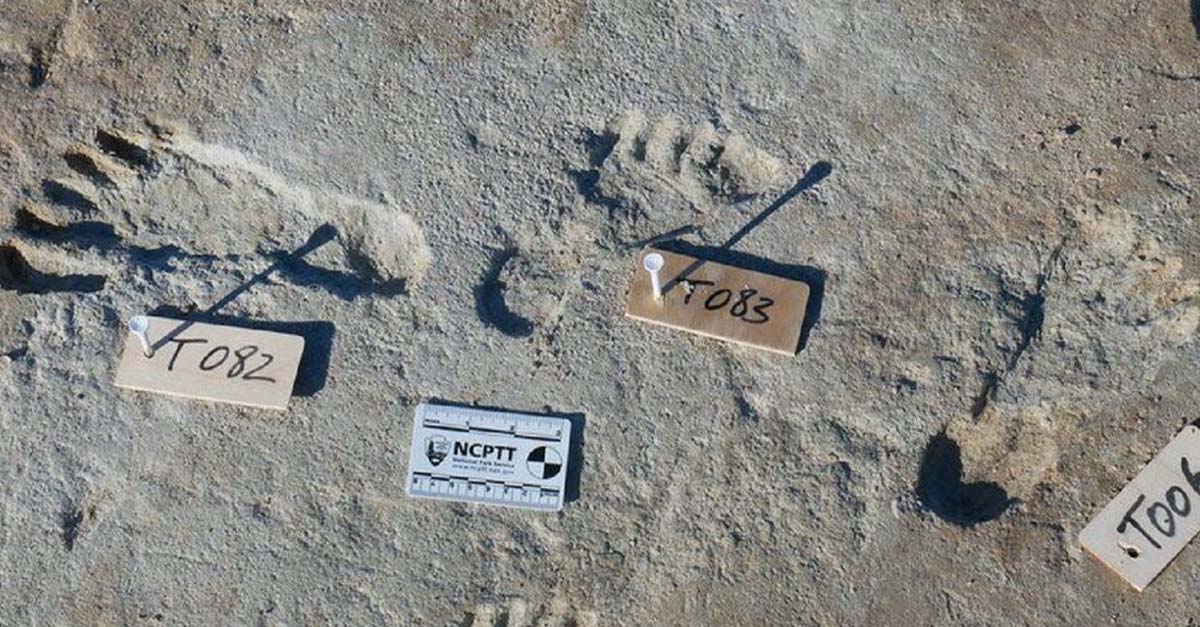Bases To Vessels
Throughout America, soldiers and sailors serve at installations bearing the names of those who once stood before them. Most forts now stand renamed, but their stories remain powerful acknowledgments to our complicated history.

Fort Bragg: Braxton Bragg
America's most populous military installation once honored a man who fought against the United States. Fort Bragg in North Carolina, home to over 50,000 military personnel, bore the name of Braxton Bragg. It was renamed Fort Liberty in 2023.
 Jonas N. Jordan, U.S. Army Corps of Engineers, Wikimedia Commons
Jonas N. Jordan, U.S. Army Corps of Engineers, Wikimedia Commons
Fort Bragg: Braxton Bragg (Cont.)
The naming decision came during World War I when the Army was rapidly expanding and needed to establish new training facilities across the South. Bragg himself had a complicated military career. He graduated from West Point and served with distinction in the Mexican-American War.
 Unknown author, restoration by Adam Cuerden, Wikimedia Commons
Unknown author, restoration by Adam Cuerden, Wikimedia Commons
Fort Bragg: Braxton Bragg (Cont.)
Bragg later resigned from the US Army to join Confederate forces. What's particularly ironic about Fort Bragg's namesake is that Braxton Bragg was widely disliked, even among his peers. Historians note that he was known for his combative personality and inability to maintain cordial relationships with subordinates.
 Unknown author, Wikimedia Commons
Unknown author, Wikimedia Commons
Fort Benning: Henry L. Benning
Henry Lewis Benning earned the nickname "Rock" for his steadfastness in battle, but his most enduring legacy might be his fervent defense of slavery. As a Georgia Supreme Court justice before the Civil War, he authored opinions that solidified the legal framework supporting enslavement.
Fort Benning: Henry L. Benning (Cont.)
Fort Benning (renamed Fort Moore in 2023), established in 1918, spans 182,000 acres across Georgia and Alabama. As the "Home of the Infantry," it trains thousands of soldiers annually in combat tactics and leadership. Benning's military reputation comes from his command at Antietam and Gettysburg, where he determinedly led troops.
 AirborneRanger, Wikimedia Commons
AirborneRanger, Wikimedia Commons
Fort Benning: Henry L. Benning (Cont.)
But beyond the battlefield, his political influence in the Confederacy was equally important. Before taking up arms against the Union, Benning advocated for secession to preserve slavery. In an 1861 speech, he declared that the primary reason for Georgia's secession was to “prevent the abolition of her slavery”.
 U.S. Military, Wikimedia Commons
U.S. Military, Wikimedia Commons
Fort Gordon: John Brown Gordon
The modern cybersecurity hub of the US Army operates from a base named for a suspected Klan leader. John Brown Gordon, who rose from civilian to lieutenant general without military training, became a Georgia governor and US senator after the Civil War.
 Mathew Benjamin Brady, Wikimedia Commons
Mathew Benjamin Brady, Wikimedia Commons
Fort Gordon: John Brown Gordon (Cont.)
His political rehabilitation stands as an example of the post-Reconstruction era's complicated relationship with Confederate figures. The installation was first known as Camp Gordon. It is the current home of the US Army Signal Corps and Cyber Center of Excellence and has been renamed Fort Eisenhower in 2023.
 formulanone, Wikimedia Commons
formulanone, Wikimedia Commons
Fort Gordon: John Brown Gordon (Cont.)
Gordon's military prowess got him the nickname "the Gallant Gordon" for his leadership at Antietam. Here, he sustained multiple wounds but remained on the battlefield. Even though the man lacked formal documentation, people believe that Gordon was the first Grand Dragon of the Georgia Klan.
 Mathew Benjamin Brady, Wikimedia Commons
Mathew Benjamin Brady, Wikimedia Commons
Fort AP Hill: Ambrose Powell Hill
Virginia's sprawling training facility hosts joint exercises for all military branches on its 76,000 acres. The young Confederate general was killed in action at Petersburg just days before Appomattox. He was recognized for his rapid response deployments, because of which he was also called "Little Powell".
Fort A.P. Hill: Ambrose Powell Hill (Cont.)
Well, Hill's path to Confederate generalship started with his resignation from the US Army in 1861. He is said to be one of Lee's most reliable commanders, particularly noted for his performance during the Seven Days Battles. Fort AP Hill was renamed Fort Walker in 2023.
 Mathew Benjamin Brady / Levin Corbin Handy, Wikimedia Commons
Mathew Benjamin Brady / Levin Corbin Handy, Wikimedia Commons
Fort A.P. Hill: Ambrose Powell Hill (Cont.)
This occurred during the rapid military expansion preceding America's entry into World War II. A lesser-known aspect of General Hill's life was his ongoing battle with what doctors then called "neurasthenia". This was a combination of depression and chronic illness that repeatedly sidelined him during campaigns.
 William Ludwell Sheppard
, Wikimedia Commons
William Ludwell Sheppard
, Wikimedia Commons
Fort Lee: Robert E Lee
The most controversial Confederate namesake might be Robert E Lee. He was the distinguished West Point graduate who turned down command of Union forces to lead the Confederate Army. The fort with his name sat just 25 miles south of Richmond, the former Confederate capital.
 Julian Vannerson, Wikimedia Commons
Julian Vannerson, Wikimedia Commons
Fort Lee: Robert E Lee (Cont.)
Fort Lee emerged as a permanent Army installation in 1917 and now serves as the headquarters for the Army's Combined Arms Support Command and Sustainment Center of Excellence. Lee publicly opposed secession before Virginia left the Union, yet ultimately chose loyalty to his state over the nation.
Fort Lee: Robert E Lee (Cont.)
His personal opposition to slavery but willingness to fight for the Confederate cause mirrors the contradictions that make Civil War history so nuanced. After the battle, he encouraged reconciliation and accepted the presidency of Washington College, focusing on education rather than prolonging sectional hostility.
 Levin Corbin Handy / Adam Cuerden, Wikimedia Commons
Levin Corbin Handy / Adam Cuerden, Wikimedia Commons
Fort Pickett: George Pickett
"Pickett's Charge" is one of history's most infamous military blunders. After all, it was a desperate, failed assault that cost thousands of Confederate lives at Gettysburg. Yet few visitors to Fort Pickett (now Fort Barfoot) in Virginia connect the training facility with the man who led that doomed charge.
Fort Pickett: George Pickett (Cont.)
Since 1942, it has functioned as a National Guard training site. Pickett graduated last in his West Point class of 1846. However, his flamboyant style, featuring perfumed, shoulder-length ringlets and a custom-designed uniform, made him a memorable figure in Confederate ranks.
Fort Pickett: George Pickett (Cont.)
Prior to joining the rebellion, he made a name for himself during the Mexican-American War. Pickett planted the American flag on Chapultepec Castle alongside future rivals like Ulysses S Grant and Thomas "Stonewall" Jackson. He has hosted international troops, including NATO forces, since the Cold War.
 Civil War Glass Negatives, Wikimedia Commons
Civil War Glass Negatives, Wikimedia Commons
Fort Polk: Leonidas Polk
Episcopal bishop by profession, Confederate general by circumstance. Leonidas Polk is one of those honored with a military installation name. The Army's combat training facility, Fort Polk, is situated in west-central Louisiana and has fake villages that replicate warfare in Middle Eastern settings.
 H. B. Hall and Sons, Wikimedia Commons
H. B. Hall and Sons, Wikimedia Commons
Fort Polk: Leonidas Polk (Cont.)
Despite lacking formal military training, Polk was appointed a major general in the Confederate Army partly due to his friendship with Jefferson Davis. They had been classmates at West Point, though Polk left to pursue religious studies. His controversial military career included strategic blunders.
 History of Leonidas Polk and William Henry Johnson by KLAXProduction
History of Leonidas Polk and William Henry Johnson by KLAXProduction
Fort Polk: Leonidas Polk (Cont.)
Fort Polk's namesake saw his end in June 1864. This occurred when a Union artillery shell struck him directly while he was scouting enemy positions with Generals Johnston, Hardee, and Jackson. The shell tore through his chest, killing him instantly.
 Wikib101hermann, Wikimedia Commons
Wikib101hermann, Wikimedia Commons
Camp Beauregard: Pierre GT Beauregard
The man who ordered the first shots of the Civil strife gave his name to a Louisiana National Guard training site. Pierre Gustave Toutant Beauregard was in charge of the Confederate troops at Fort Sumter back in April 1861, starting four long years of brutal fighting.
 Mathew Benjamin Brady, Wikimedia Commons
Mathew Benjamin Brady, Wikimedia Commons
Camp Beauregard: Pierre GT Beauregard (Cont.)
Camp Beauregard encompasses roughly 12,500 acres near Alexandria, Louisiana. It was his Creole heritage and French accent that made him stand out among Confederate leadership. During his earlier days, this individual had briefly served as superintendent of West Point.
 George Peter Alexander Healy (1813-1894) Billy Hathorn, Wikimedia Commons
George Peter Alexander Healy (1813-1894) Billy Hathorn, Wikimedia Commons
Camp Beauregard: Pierre GT Beauregard (Cont.)
After the war was over, Beauregard's life took unexpected turns. He advocated for civil rights and Black suffrage in Louisiana, breaking sharply with many former Confederates. He soon became the commissioner of public works in New Orleans and wrote extensively on military topics.
 Jacob singleton21, Wikimedia Commons
Jacob singleton21, Wikimedia Commons
Fort Hood: John Bell Hood
Fort Hood, now referred to as Fort Cavazos, was one of the biggest military outposts in the world. Even after getting a leg amputated from his injuries at Chickamauga, John Bell Hood kept on leading his troops while strapped to his horse with incredible determination.
 Mathew Benjamin Brady, Wikimedia Commons
Mathew Benjamin Brady, Wikimedia Commons
Fort Hood: John Bell Hood (Cont.)
The base started out as Camp Hood back in 1942 during WWII and eventually turned into a permanent spot. It was super important for Army training and operations as it hosted major divisions like the 4th Infantry and the 1st Cavalry Division.
 Michael Heckman, III Corps PAO, Wikimedia Commons
Michael Heckman, III Corps PAO, Wikimedia Commons
Fort Hood: John Bell Hood (Cont.)
Hood lost the majority of his income in unsuccessful business endeavors. In 1879, he died of yellow fever during an epidemic in New Orleans that also claimed the lives of his wife and eldest child, leaving ten children orphans.
 Confederate Memorial Literary Society, Wikimedia Commons
Confederate Memorial Literary Society, Wikimedia Commons
Fort Rucker: Edmund Rucker
Rucker was the grandson of General James Winchester. On relocating to Nashville in 1853 and completing a rudimentary education, Rucker worked as a railroad surveyor before becoming an engineer. He also worked as Memphis' city engineer in the late 1850s.
 E. G. Williams & Bro, Wikimedia Commons
E. G. Williams & Bro, Wikimedia Commons
Fort Rucker: Edmund Rucker (Cont.)
In April 1861, Rucker joined Pickett's Tennessee Company of Sappers and Miners in the Confederate Army as a private. He advanced through the ranks swiftly because of his leadership abilities. During conflicts like the Battle of Island Number Ten, he oversaw artillery units.
 George M. Cruikshank, Wikimedia Commons
George M. Cruikshank, Wikimedia Commons
Fort Rucker: Edmund Rucker (Cont.)
Once the war was over, this individual returned to his railroad origins and worked with Forrest to build railroads. Financial limitations during the Panic of 1873 caused their Selma-to-Memphis railroad project to fail, but Rucker was able to recover by selling stock once the downturn ended.
 U.S. Army (Transferred by The Bushranger/Originally uploaded by The Bushranger), Wikimedia Commons
U.S. Army (Transferred by The Bushranger/Originally uploaded by The Bushranger), Wikimedia Commons
USS Robert E Lee: Robert E Lee
Steel and nuclear power—strange memorials for a man who led armies in an agrarian society. The USS Robert E Lee, a George Washington-class submarine commissioned in 1960, carried 16 Polaris nuclear missiles throughout the Cold War. This 381-foot vessel conducted deterrent patrols beneath the Atlantic.
USS Robert E Lee: Robert E Lee (Cont.)
Its decommissioning took place in 1983. "Duty then is the sublimest word in the English language," Lee once wrote this quote that submarine commanders appropriated despite its author having broken his oath to the United States. Lee had spent 32 years in US Army service.
 Unknown Author, Wikimedia Commons
Unknown Author, Wikimedia Commons
USS Robert E Lee: Robert E Lee (Cont.)
He was also the superintendent of West Point. The Navy has a long tradition of naming vessels after historical figures. So, sailors aboard the USS Robert E Lee nicknamed their vessel "Bobby Lee" during its service life. When submerged, the submarine could remain underwater for months.
 Mathew Benjamin Brady, Wikimedia Commons
Mathew Benjamin Brady, Wikimedia Commons
USS Stonewall Jackson: Thomas "Stonewall" Jackson
Religious fervor shaped both Jackson's military career and personal life. A devout Presbyterian, he refused to send battle reports on Sundays and often raised his arms skyward during combat. Jackson believed that divine protection kept him safe from enemy fire. Previously, he used to teach physics and artillery tactics.
 Unknown author, Wikimedia Commons
Unknown author, Wikimedia Commons
USS Stonewall Jackson: Thomas "Stonewall" Jackson (Cont.)
The submarine's nuclear deterrence mission showed how far military technology had advanced since Jackson's day. What started with muskets and artillery advanced to ballistic missiles with nuclear warheads. Jackson died in May 1863 after being accidentally shot by his troops at Chancellorsville.
USS Stonewall Jackson: Thomas "Stonewall" Jackson (Cont.)
Ordered on July 21, 1961, the USS Stonewall Jackson was constructed at California's Mare Island Naval Shipyard and was officially launched on November 30, 1963. Then, on August 26, 1964, it was put into service, with its ultimate motto being “Strength - Mobility”.
 Camera Operator: PH3 BELTON, Wikimedia Commons
Camera Operator: PH3 BELTON, Wikimedia Commons
USS Dixon: George E Dixon
A nautical mythology, the first successful submarine attack in history occurred in February 1864 when Lieutenant George Dixon and the experimental submarine CSS Hunley were lost in the murky waters of Charleston Harbor. The Navy released the USS Dixon after his name, a submarine tender.
 PH2 Patrick W. Muscatt, U.S. Navy, Wikimedia Commons
PH2 Patrick W. Muscatt, U.S. Navy, Wikimedia Commons
USS Dixon: George E Dixon (Cont.)
Dixon had fought in the Battle of Shiloh in 1862, where he was struck in the thigh by a bullet. The bullet hit a $20 gold coin in his pocket, which absorbed much of the impact and saved his life. It was given to him by Queenie Bennett.
 Pi3.124, CC BY-SA 4.0, Wikimedia Commons
Pi3.124, CC BY-SA 4.0, Wikimedia Commons
USS Dixon: George E Dixon (Cont.)
The tender's primary mission involved maintaining the fleet's nuclear submarine force throughout the Cold War, servicing the USS Stonewall Jackson and USS Robert E Lee. Lieutenant Dixon's final resting place remained unknown until the CSS Hunley was recovered in 2000.
USS Chancellorsville: Battle Of Chancellorsville
Shells screamed through Virginia forests in May 1863 during the fight that would later inspire a warship's name. The USS Chancellorsville, a Ticonderoga-class guided-missile cruiser, commemorates what many historians consider Robert E Lee's most significant victory, though one that cost Jackson his life to friendly fire.
 U.S. Navy photo by Photographer’s Airman Jonathan D. Chandler, Wikimedia Commons
U.S. Navy photo by Photographer’s Airman Jonathan D. Chandler, Wikimedia Commons
USS Chancellorsville: Battle Of Chancellorsville (Cont.)
Equipped with Tomahawk cruise missiles, advanced radar systems, and anti-aircraft weaponry, the modern warship's technological sophistication starkly contrasts the chaos of the battle it commemorates. During the actual Battle of Chancellorsville, Union General Joseph’s forces outnumbered Lee's by more than two to one.
 John R. Chapin, Wikimedia Commons
John R. Chapin, Wikimedia Commons
USS Chancellorsville: Battle Of Chancellorsville (Cont.)
Yet Lee's daring decision to split his forces and Jackson's subsequent flanking maneuver resulted in a Confederate victory. What used to be in active service with the Pacific Fleet has now begun the process of renaming the USS Chancellorsville.
 U.S. Navy photo by Photographer's Mate Airman Dylan Butler, Wikimedia Commons
U.S. Navy photo by Photographer's Mate Airman Dylan Butler, Wikimedia Commons
USNS Maury: Matthew Fontaine Maury
The USNS Maury was launched in 2013. Long before resigning his commission to join Virginia in secession, Maury had changed international shipping through meticulous data collection. His Naval Observatory work led to standardized nautical charts and established oceanography as a formal science.
 Ella Sophonisba Hergesheimer, Wikimedia Commons
Ella Sophonisba Hergesheimer, Wikimedia Commons
USNS Maury: Matthew Fontaine Maury (Cont.)
As a huge 7,500-ton ship, it uses multibeam sonars and oceanographic sensors to map the world's seabeds. After fleeing to Mexico following the surrender, Maury eventually returned to America to teach at the Virginia Military Institute until his demise in 1873.
















